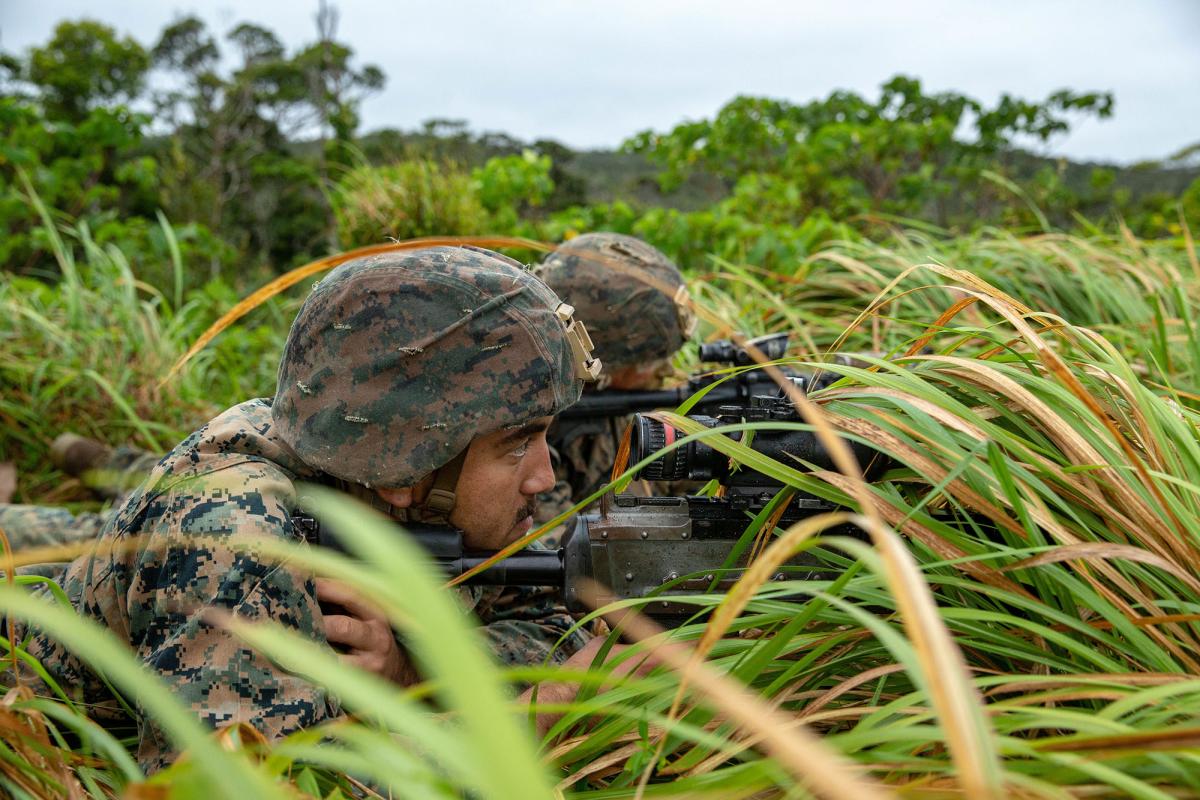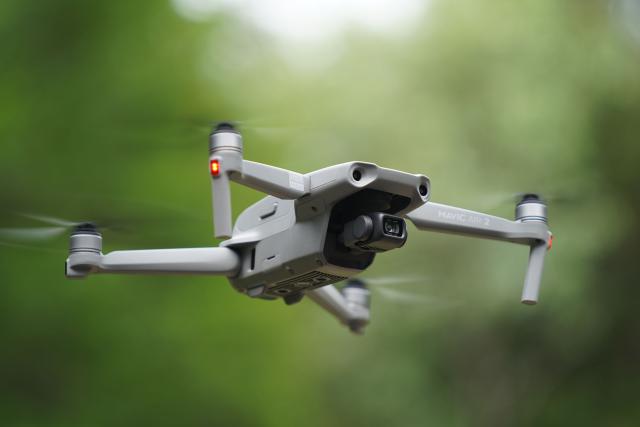By Captain Walker Mills
 “A powerful force picked him up, shook him, and threw him to the floor. Through the ringing in his ears, he could hear tent mates shouting to find out who was all right.” Enlisted radio repairman, Albert Villanueva, of the 933rd Anti-Aircraft Artillery Battalion had just survived an enemy airstrike on Cho-do Island off the coast of Korea on the night of April 15th, 1953. Two of his friends, PFC Herbert Tucker and William Walsh, did not. These two Americans marked the last deaths inflicted on the U.S. military by enemy aircraft. Even though aerial combat had entered the jet age, North Korea still flew obsolete Yak-18 and Po-2 aircraft (known as ‘Bed Check Charlie’) to engage United Nations and U.S. military forces. Flying low, slow, and often at night, these aircraft successfully evaded then-modern U.S. aircraft. It was not until the U.S. military reintroduced World War II-era, propeller-driven Navy F4U-5N fighters that ‘Bed Check Charlie’ aircraft took significant losses. While the ‘Bed Check Charlie’ operations did not have meaningful impacts on the overall war effort, their harassing attacks created a sense of vulnerability in U.S. troops. Carried out by antiquated propeller-driven aircraft (including a biplane from 1927), the ‘Bed Check Charlie’ attacks stood in stark contrast to the modern, technologically advanced U.S. airpower of the day. Today, there is a danger of history repeating itself for U.S. ground troops.
“A powerful force picked him up, shook him, and threw him to the floor. Through the ringing in his ears, he could hear tent mates shouting to find out who was all right.” Enlisted radio repairman, Albert Villanueva, of the 933rd Anti-Aircraft Artillery Battalion had just survived an enemy airstrike on Cho-do Island off the coast of Korea on the night of April 15th, 1953. Two of his friends, PFC Herbert Tucker and William Walsh, did not. These two Americans marked the last deaths inflicted on the U.S. military by enemy aircraft. Even though aerial combat had entered the jet age, North Korea still flew obsolete Yak-18 and Po-2 aircraft (known as ‘Bed Check Charlie’) to engage United Nations and U.S. military forces. Flying low, slow, and often at night, these aircraft successfully evaded then-modern U.S. aircraft. It was not until the U.S. military reintroduced World War II-era, propeller-driven Navy F4U-5N fighters that ‘Bed Check Charlie’ aircraft took significant losses. While the ‘Bed Check Charlie’ operations did not have meaningful impacts on the overall war effort, their harassing attacks created a sense of vulnerability in U.S. troops. Carried out by antiquated propeller-driven aircraft (including a biplane from 1927), the ‘Bed Check Charlie’ attacks stood in stark contrast to the modern, technologically advanced U.S. airpower of the day. Today, there is a danger of history repeating itself for U.S. ground troops. Since the Korean War, U.S. ground forces have operated with near total air supremacy in every conflict. The collapse of the Soviet Union and ongoing counterterrorism and counterinsurgency operations have led U.S. forces to take air supremacy for granted. Meanwhile, U.S. ground units’ tactics, techniques, and procedures (TTPs) designed to mitigate enemy air operations through passive defensive measures, such as signature management, have atrophied. Marine units, without the layered air defenses employed by the Army, are particularly at risk. After decades of operating without enemy air threats, the Marine Corps had little incentive to invest in air-defense systems or train to operate under contested or hostile airspace—until now.
New low-cost, prolific, and highly effective unmanned aerial systems (UAS) have changed the character of air warfare. The Marine Corps needs to adapt to this new reality by acquiring air-defense systems capable of engaging a range of aerial threats and change or modify long-standing TTPs to increase unit survivability from aerial attack. No longer can joint and service airpower be taken for granted, nor can it be assumed that friendly air protection will be adequate. These assumptions need to be erased from training and operational planning baselines. In future fights, the air domain will be contested at best and hostile at worst. Units deploying overseas, especially in combat zones, need to deploy with appropriate antiaircraft and counter-UAS weaponry with the competence to operate them. The most immediate and effective way for Marines to prepare for this is by updating their TTPs to place increased emphasis on camouflage, concealment, and deception (CCD) and to rigorously incorporate these skills into current training evolutions.
A Worrying Trend
The presence of UAS have been steadily increasing on battlefields over the past decade. The falling prices of computer processors and drone proliferation have democratized air power. From state actors to terrorist organizations, anyone can manufacture and employ cheap, yet effective systems. Commercial off-the-shelf UASs are generally cheaper and less capable, but they can be massed or swarmed to achieve devastating effects; even quadcopters available at Costco and 3D printed drone designs have been weaponized. Much like the UASs on the battlefield today, North Korean ‘Bed Check Charlie’ aircraft were effective because they struck an enemy that was unprepared to deal with unconventional threats. ‘Bed Check Charlie’ aircraft flew lower and slower than U.S. aircraft, often at night to conceal their approach and avoid ground fire. These tactics allowed these aircraft to attack the installation at Cho-do and return unscathed. Likewise, recent drone attacks in Saudi Arabia, Libya, and Syria have demonstrated that home-made and improvised UASs, coupled with innovative tactics, are effective against modern air-defense weapons like the Russian Pantsir-S1 (NATO designation: SA-22 Greyhound) or the American-made Patriot system. Slow, low-flying UASs are effective because their small size and construction makes visual and radar detection difficult. Current U.S. tactics and weapons are optimized for a different type of war.

Commercial drones have become ubiquitous and pose a significant risk to U.S. forces on the ground.
(Shutterstock)
The ongoing civil war in Syria provides an example of what future, contested airspace may look like in proxy or hybrid wars. The airspace was and is saturated with coalition, Syrian, Iranian, Turkish, and Russian air assets. On 20 June 2017, U.S. forces intercepted and shot down an Iranian Shaheed-129, roughly equivalent to the U.S. MQ-1 Predator, after displaying hostile intent toward U.S. forces in Syria. This came on the heels of another shootdown of a Shaheed-129 after it dropped a munition (which fortunately was a dud) near friendly forces. In each case U.S. Air Force fighters intercepted the drones before reaching their targets. But this may not always be the case. Manned fighter assets may not be available because of other priority tasking or could be limited by enemy air defenses.
Israeli air strikes also have demonstrated the limitations of modern air defenses against UASs. Russia provided their much-hyped SA-22 Pantsir-1, a modern short-range air-defense system armed with both missiles and twin 30mm cannons to engage close range threats, to the Syrian regime. The system is advertised as an ideal counter-UAS weapon that is also capable of intercepting conventional aircraft and missiles. However, Israeli forces successfully neutralized the SA-22 systems and other surface-to-air missile (SAM) systems by using unmanned aerial systems as part of modern suppression of enemy air defenses (SEAD) missions.
Terrifying Realities: Swarms
“Syrian troops reported in social media that the munitions were relatively slow, and left winged debris . . . the anti-SAM weapon was likely an Israeli-built Harop (Harpy 2) kamikaze drone.” While there have been various negative reports regarding the operational performance of the SA-22 system in Syria and Libya, the more troubling aspect is that the system may have performed as intended and succumbed when its weapons ran out of ammunition. Initially, Syrian air defenses appeared to have successfully thwarted the first Israeli attacks by intercepting incoming missiles. In response, Israel targeted the antiaircraft systems utilizing swarms. Antiaircraft operators simply found themselves overwhelmed by the sheer number of drones which quickly depleted their magazines. An antiaircraft system without missiles is a defenseless target and Russia has attributed some of the SA-22 losses to this scenario. The implications for U.S. troops are that their current antiair construct, much like that of the Russians, is vulnerable to swarming because it relies heavily on interceptor munitions. Marine Low-Altitude Air Defense units rely almost solely on Stinger missiles. Whether or not Marines are better at detecting, tracking, and intercepting aircraft and UASs is meaningless unless they have the magazine depth to engage a whole swarm before magazine depletion. As long as drones are cheaper, more plentiful, and deployed faster than any logistics chain can replenish antiaircraft systems, swarms will overwhelm and strip ground units of their air defenses. Once dedicated air-defense assets are neutralized, ground forces will be defenseless to further aerial attack.
Hide and Seek
Marines cannot rely solely on the ability to intercept hostile munitions or weapon systems and require a layered defense that includes kinetic, non-kinetic, and passive measures. Passive defense measures, such as concealment and camouflage, may prevent adversarial weapons cueing altogether. The 2016 Marine Corps Operating Concept affirmed:
Tomorrow’s fights will involve conditions in which ‘to be detected is to be targeted is to be killed.’ Adversaries will routinely net together sensors, spies, UAS, and space imagery to form sophisticated ‘ISR-strike systems’ that are able to locate, track, target, and attack an opposing force.
Fortunately, Marines can implement changes almost immediately. Through better camouflage, concealment, and deception (CCD), Marines can make themselves harder targets for enemy aerial platforms to detect, track, and target. In many cases, the doctrine already exists but is not commonly practiced. Marines have allowed these skills atrophy over the past several decades. Years of fighting counterinsurgency campaigns from fixed bases have left many Marines skeptical of the value of even the most basic, personal camouflage. Many are familiar with the collective groan that accompanies the instruction to “cammie paint up,” and it is often left undone in field exercises. Similarly, Marines rarely “veg up” and camouflage themselves after their initial field training at The Basic School. In training, tactical vehicles are rarely camouflaged adequately with many vehicles painted the wrong color for the environment. Unit camouflage netting is set up for shade—not for concealment. Such skills were often considered unnecessary—an attitude perpetuated by veterans of Iraq and Afghanistan where stability and counterinsurgency missions led some to believe that hiding was either impossible or unnecessary.

Operating from Expeditionary Advanced Bases on remote Pacific Islands will require Marines to
blend into their environment not just for hours but for days or weeks at a time.
(U.S. Marine Corps photo by Alize Sotelo)
The recent Nagorno-Karabakh conflict between Armenia and Azerbaijan illustrates the devastating impacts small UASs can have on unprepared ground forces. Azerbaijan successfully targeted 185 Armenian tanks with UASs supplied by Turkey and Israel. Released drone attack videos show targeted Armenian tanks and troops in entrenched, stationary positions with little to no camouflage, being neutralized. In some cases, UASs successfully targeted camouflaged vehicle hides by following vehicle tracks to their terminus. Armenia possessed air defense systems, but they proved inadequate against UAS threats.
Potential future operations against peer states will require Marines to adapt to a hostile environment. Marines will be expected to operate inside enemy weapon-engagement zones, and CCD will be critical to their survival. In Expeditionary Advanced Base Operations, Marines are expected to be able to persist forward and deliver effects in support of maritime operations. To do this, Marines will have to win the ‘hider-finder’ competition by being disciplined in staying hidden for long periods of time. Signature management across the full electromagnetic spectrum (including visual, infrared and electronic emissions) and understanding enemy ISR capabilities so they can be avoided or mitigated will be crucial. Tactical, multispectral decoys need to be part of this effort to complicate and confuse enemy targeting efforts in the event of compromise.
The Way Forward
Not a single U.S. ground troop has been lost due to enemy aircraft since the Korean War, but not for lack of enemy efforts. “As we were going out, they was [sic] raining mortars in on top of us,” remembered one U.S. soldier about a UAS attack on his base in Syria. In other cases, drones were used for reconnaissance and filmed rocket attacks on Marines in Afghanistan. Recognizing the growing problem, the Commander, U.S. Central Command, Marine Corps General Kenneth McKenzie, has repeatedly warned of the danger of drone attacks. He told reporters that “on the ground, right now, I worry about our ability to protect against swarms of those craft.” Despite the danger and warning, counter-UAS is on the unfunded priorities list for Central Command. To effectively counter the evolving air threat, Marines need to continue development and testing of counter-drone systems. Some of these systems may be years from operational fielding and are at risk of remaining behind the curve of threat weapons development. Raytheon’s Coyote system, designed as a counter-drone kinetic interceptor system, uses its own suicide drones; however, if employed against swarms, it runs the risk of magazine depletion.
Directed-energy weapons may be the best answer for swarm defenses. In the immediate term, a reemphasis on TTPs designed to camouflage and conceal Marine positions from aerial reconnaissance will make them more difficult to detect, track, and target. From counterinsurgencies to peer conflicts, Marines can no longer assume that they are immune from enemy aerial reconnaissance or attack. In the Korean War, old aircraft employed correctly, landed fatal blows on a superior force with air cover. Today, an adversary with cheap, readily available UASs can do the same. Antiair capabilities are evolving rapidly and have had marked successes, but the Marine Corps writ large is still not ready to operate without air superiority. Unless this changes, PFCs Herbert Tucker and William Walsh will not be the last U.S. troops to die by enemy aircraft.
No comments:
Post a Comment